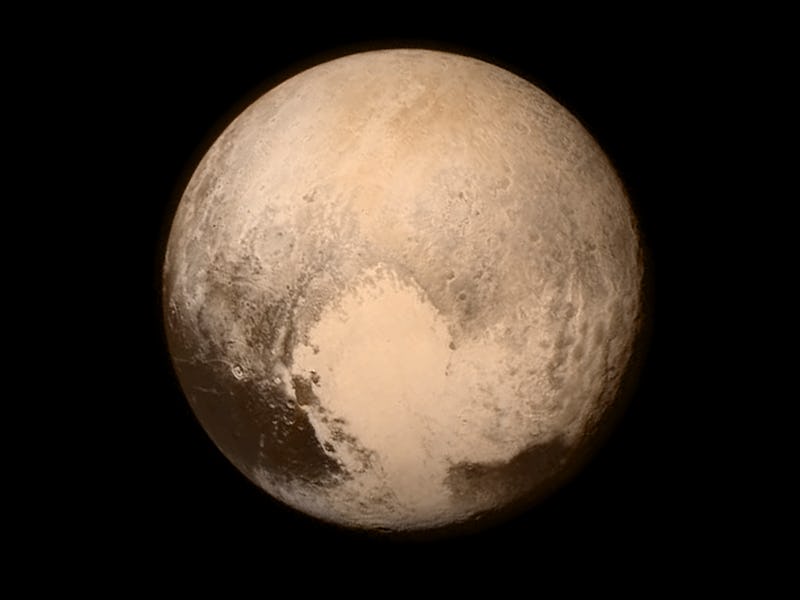We all have fond childhood memories of learning about Pluto, right? Well, like many parts of adulthood, we eventually find out the dark truth about that thing we once enjoyed. New research backed by NASA suggests Pluto is even colder than scientists assumed, and that was already pretty bone-chilling.
According to a study published Thursday in Nature, Pluto’s hydrocarbon “haze particles” cause its atmosphere to be unreasonably cold. Using temperature data collected by NASA’s New Horizons spacecraft, researchers deduced that this haze absorbs heat and releases infrared radiation back off into space. If the team’s estimates are correct, this would mean Pluto’s atmospheric temperature is “70 Kelvin (-203 degrees Celsius, or -333 degrees Fahrenheit), instead of the predicted 100 Kelvin (-173 Celsius, or -280 degrees Fahrenheit),” researchers say.
Artist's impression of Pluto and Charon. (Image: X. Liu)
This concept sounds like an oxymoron, but it actually makes some sense. On one hand, it suggests haze — not gas molecules — traps heat within Pluto’s atmosphere. At the same time, those haze molecules could account for why the planet is so damn cold.
“We find that haze particles have substantially larger solar heating and thermal cooling rates than gas molecules,” the team wrote in its study. “We conclude that Pluto’s atmosphere is unique among Solar System planetary atmospheres, as its radiative energy equilibrium is controlled primarily by haze particles instead of gas molecules.”
Pluto's layers of haze. (Image: NASA/JHUAPL/SwRI)
NASA’s New Horizons performed a six-month reconnaissance flyby of Pluto back in the summer of 2015. Its breathtaking images reveal not only the dwarf planet’s haunting beauty, but its layers of haze. Researchers think that red stuff seen in images of Pluto might be related to haze particles, but it’ll take more investigating to know for sure.
Even if Pluto is the literal embodiment of hell frozen over, it’s still charming — even if that charm is fueled by a heady mix of nostalgia and fear.
